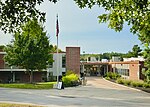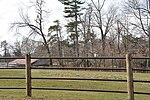Harvard, Massachusetts

Harvard is a town in Worcester County, Massachusetts, United States. The town is located 25 miles west-northwest of Boston, in eastern Massachusetts. It is mostly bounded by I-495 to the east and Route 2 to the north. A farming community settled in 1658 and incorporated in 1732, it has been home to several non-traditional communities, such as Harvard Shaker Village and the utopian transcendentalist center Fruitlands. It is also home to St. Benedict Abbey, a traditional Catholic monastery, and for over seventy years was home to Harvard University's Oak Ridge Observatory, at one time the most extensively equipped observatory in the Eastern United States. It is now a rural and residential town noted for its public schools. The population was 6,851 at the 2020 census.
Excerpt from the Wikipedia article Harvard, Massachusetts (License: CC BY-SA 3.0, Authors, Images).Harvard, Massachusetts
Massachusetts Avenue,
Geographical coordinates (GPS) Address Nearby Places Show on map
Geographical coordinates (GPS)
| Latitude | Longitude |
|---|---|
| N 42.5 ° | E -71.583333333333 ° |
Address
Massachusetts Avenue 7
01451
Massachusetts, United States
Open on Google Maps










